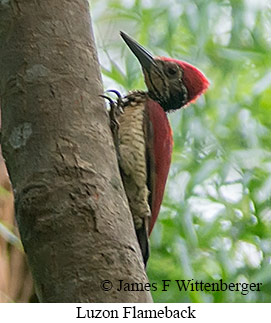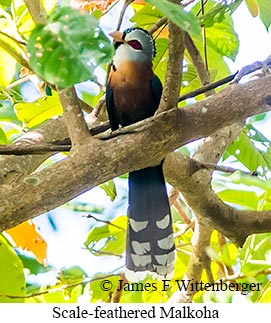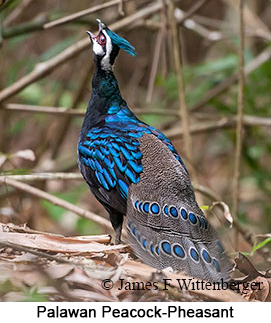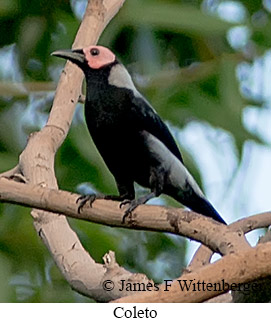ABOUT PHILIPPINES BIRDING

ASIA
PHILIPPINES
| # Species: | 692 |
| # Excl Vagrants: | 586 |
| # Endemics: | 267 |
| # Near Endemics: | 7 |
 The Philippines consists of over 7100 islands, mostly small, situated northeast of Borneo and north of Indonesia. Due to the active volcanism and tectonic plate boundaries, earthquakes and volcanism are common. Also present are deep water trenches that are some of the deepest in the world. As a result, the Philippines counts over 230 endemic birds out of some 670 species recorded. This high rate of endemism makes the Philippines an attractive destination for birders. Making a visit more imperative is the rapid rate of habitat destruction occurring in the islands. Many endemics are already endangered, some are critically endangered, and a few are extinct or soon to be extinct. Most islands are succumbing to rapid deforestation and even forest reserves are under pressue.
The Philippines consists of over 7100 islands, mostly small, situated northeast of Borneo and north of Indonesia. Due to the active volcanism and tectonic plate boundaries, earthquakes and volcanism are common. Also present are deep water trenches that are some of the deepest in the world. As a result, the Philippines counts over 230 endemic birds out of some 670 species recorded. This high rate of endemism makes the Philippines an attractive destination for birders. Making a visit more imperative is the rapid rate of habitat destruction occurring in the islands. Many endemics are already endangered, some are critically endangered, and a few are extinct or soon to be extinct. Most islands are succumbing to rapid deforestation and even forest reserves are under pressue.
The islands are usually divided geographically into 3 groups, Luzon, the Visayan Islands, and Mindanao. The Luzon region consists of Luzon Island itself, Palawan Island, Mindoro Island, and a few small nearby islands. The main islands in Visaya are Panay, Negros, Cebu, Bohol, Leyte, and Samar. The Mindanao Islands consist of Mindanao Island plus the Sulu Archipelago that is composed mainly of Basilan, Sulu Island, and Tawi-Tawi. The primary destinations for birders are Luzon, Mindanao, and Palawan, with fewer groups going to Cebu, Bohol, Negros, and occasionally Panay.
The main islands in Visaya are Panay, Negros, Cebu, Bohol, Leyte, and Samar. The Mindanao Islands consist of Mindanao Island plus the Sulu Archipelago that is composed mainly of Basilan, Sulu Island, and Tawi-Tawi. The primary destinations for birders are Luzon, Mindanao, and Palawan, with fewer groups going to Cebu, Bohol, Negros, and occasionally Panay.
Luzon Island is the largest island and the location of Manila, usual port of entry and capital city. Extensive logging has resulted in little forest remaining. The easiest birding sites to reach are the Subic Bay Naval Station outside Manila, Candaba Marsh, and Mount Makiling, not far to the south. More remote and much more difficult to reach and bird are Mount Polis and the Sierra Madre Mountains in the north.
Palawan Island is the most scenic of all the islands in the Philippines and still has good forest remaining. It's to the west of the other islands, has wonderful beaches, and a national park featuring the geologic wonder of an 8km long subterranean river and one of the world's most beautiful birds, the Palawan Peacock-Pheasant.
 Mindoro Island off the southeast coast of Luzon Island is worth one or two days short visit for a few island endemics. The main place to go birding there is at the Sablayan Penal Colony, where the best intact forest on the island still exists. All but 2 high elevation island endemics can be found there, although the Mindoro Bleeding-heart is nearly extinct and unlikely to be seen.
Mindoro Island off the southeast coast of Luzon Island is worth one or two days short visit for a few island endemics. The main place to go birding there is at the Sablayan Penal Colony, where the best intact forest on the island still exists. All but 2 high elevation island endemics can be found there, although the Mindoro Bleeding-heart is nearly extinct and unlikely to be seen.
The logistics of birding in the Philippines are complicated so birding with an organized tour is highly advisable. The best and traditional time to go birding is during January-February. Summer monsoons bring heavy rainfall from May-October. Typhoons mainly occur from July-October but can happen as late as December. Temperatures are somewhat cooler during December-February.
Mindanao Island is the second largest island and is located in the heavily Muslim south. Travel advisories are often in place but for the most part its relatively safe to go birding there. The main birding sites are Mt Kitanglad in the center of the island and the PICOP logging operation near Bislig on the east coast. The latter long travel times to reach, habitat destruction is rampant and ongoing, but birding is still productive. The former is the best place to find Philippine Eagle and other higher elevation endemics.
The main birding sites are Mt Kitanglad in the center of the island and the PICOP logging operation near Bislig on the east coast. The latter long travel times to reach, habitat destruction is rampant and ongoing, but birding is still productive. The former is the best place to find Philippine Eagle and other higher elevation endemics.
The most visited islands in the Visayan Chain are Cebu and Bohol. These islands are almost entirely deforested and have only a couple sites worth birding each. They are visited mainly for a few target species endemic to those two islands. Negros is the fourth largest island in the Philippines and hosts a number of island endemics. The main attraction is Mount Kanlaon where most of the encemics can be found. Panay Island is seldom visited other than occasional privately organized birding groups.
OTHER COUNTRIES
IN ASIA
BIRDING LOCALES
§ Includes Sarawak, Sabah, & Kalimantan
§§ Excludes Taiwan
§§§ Includes Wallacea but excludes Kalimantan (Borneo) and West Papua New Guinea & nearby islands
§§§§ Excludes Sarawak and Sabah on Borneo





